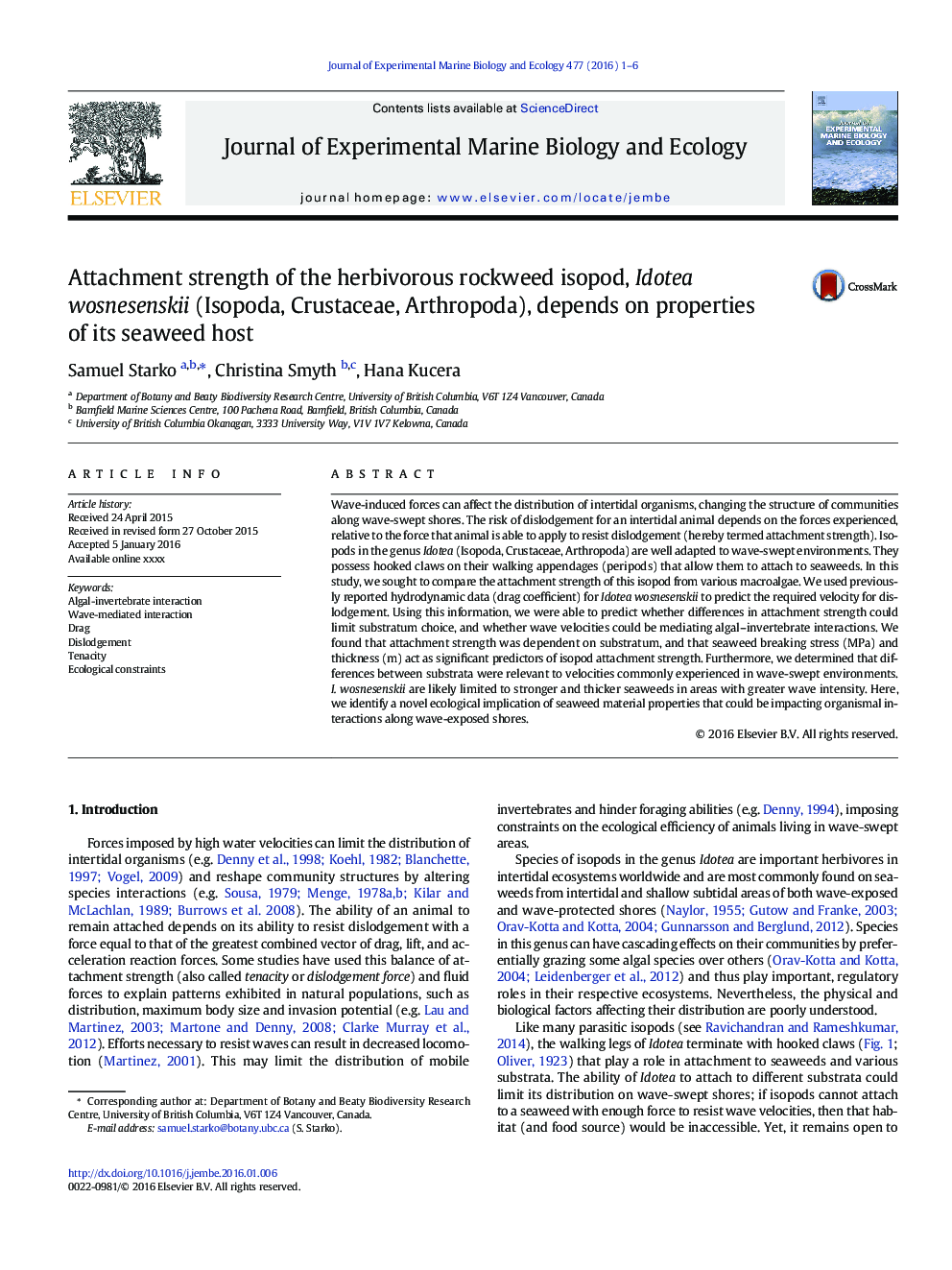| Article ID | Journal | Published Year | Pages | File Type |
|---|---|---|---|---|
| 6303742 | Journal of Experimental Marine Biology and Ecology | 2016 | 6 Pages |
Abstract
Wave-induced forces can affect the distribution of intertidal organisms, changing the structure of communities along wave-swept shores. The risk of dislodgement for an intertidal animal depends on the forces experienced, relative to the force that animal is able to apply to resist dislodgement (hereby termed attachment strength). Isopods in the genus Idotea (Isopoda, Crustaceae, Arthropoda) are well adapted to wave-swept environments. They possess hooked claws on their walking appendages (peripods) that allow them to attach to seaweeds. In this study, we sought to compare the attachment strength of this isopod from various macroalgae. We used previously reported hydrodynamic data (drag coefficient) for Idotea wosnesenskii to predict the required velocity for dislodgement. Using this information, we were able to predict whether differences in attachment strength could limit substratum choice, and whether wave velocities could be mediating algal-invertebrate interactions. We found that attachment strength was dependent on substratum, and that seaweed breaking stress (MPa) and thickness (m) act as significant predictors of isopod attachment strength. Furthermore, we determined that differences between substrata were relevant to velocities commonly experienced in wave-swept environments. I. wosnesenskii are likely limited to stronger and thicker seaweeds in areas with greater wave intensity. Here, we identify a novel ecological implication of seaweed material properties that could be impacting organismal interactions along wave-exposed shores.
Related Topics
Life Sciences
Agricultural and Biological Sciences
Aquatic Science
Authors
Samuel Starko, Christina Smyth, Hana Kucera,
